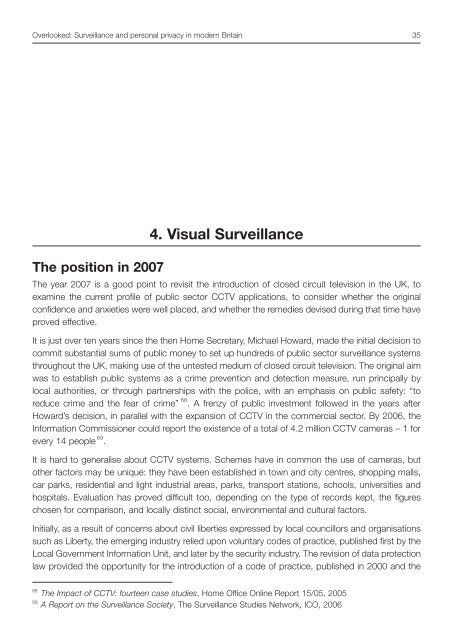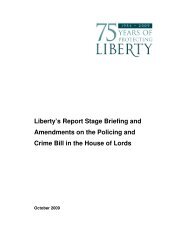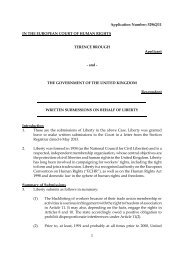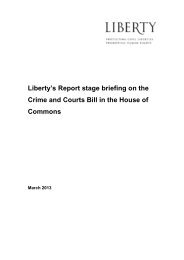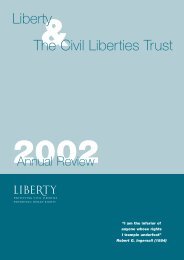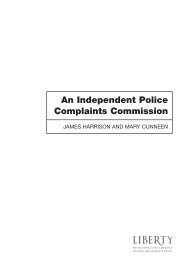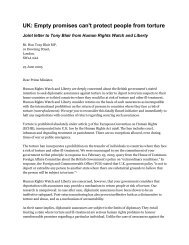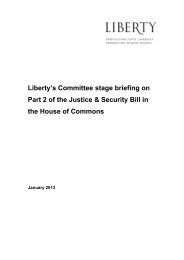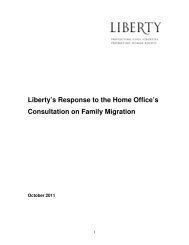Overlooked - Liberty
Overlooked - Liberty
Overlooked - Liberty
Create successful ePaper yourself
Turn your PDF publications into a flip-book with our unique Google optimized e-Paper software.
<strong>Overlooked</strong>: Surveillance and personal privacy in modern Britain 35<br />
The position in 2007<br />
4. Visual Surveillance<br />
The year 2007 is a good point to revisit the introduction of closed circuit television in the UK, to<br />
examine the current profile of public sector CCTV applications, to consider whether the original<br />
confidence and anxieties were well placed, and whether the remedies devised during that time have<br />
proved effective.<br />
It is just over ten years since the then Home Secretary, Michael Howard, made the initial decision to<br />
commit substantial sums of public money to set up hundreds of public sector surveillance systems<br />
throughout the UK, making use of the untested medium of closed circuit television. The original aim<br />
was to establish public systems as a crime prevention and detection measure, run principally by<br />
local authorities, or through partnerships with the police, with an emphasis on public safety: “to<br />
reduce crime and the fear of crime” 68 . A frenzy of public investment followed in the years after<br />
Howard’s decision, in parallel with the expansion of CCTV in the commercial sector. By 2006, the<br />
Information Commissioner could report the existence of a total of 4.2 million CCTV cameras – 1 for<br />
every 14 people 69 .<br />
It is hard to generalise about CCTV systems. Schemes have in common the use of cameras, but<br />
other factors may be unique: they have been established in town and city centres, shopping malls,<br />
car parks, residential and light industrial areas, parks, transport stations, schools, universities and<br />
hospitals. Evaluation has proved difficult too, depending on the type of records kept, the figures<br />
chosen for comparison, and locally distinct social, environmental and cultural factors.<br />
Initially, as a result of concerns about civil liberties expressed by local councillors and organisations<br />
such as <strong>Liberty</strong>, the emerging industry relied upon voluntary codes of practice, published first by the<br />
Local Government Information Unit, and later by the security industry. The revision of data protection<br />
law provided the opportunity for the introduction of a code of practice, published in 2000 and the<br />
68<br />
The Impact of CCTV: fourteen case studies, Home Office Online Report 15/05, 2005<br />
69<br />
A Report on the Surveillance Society, The Surveillance Studies Network, ICO, 2006


